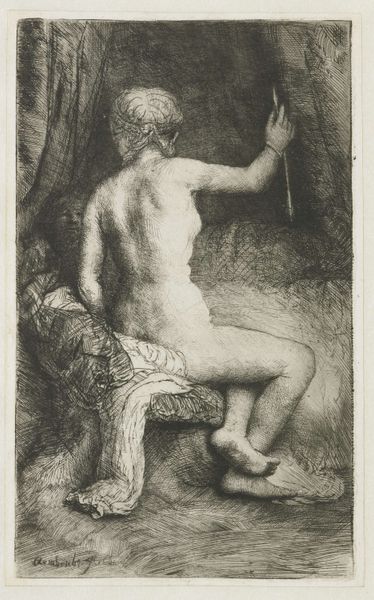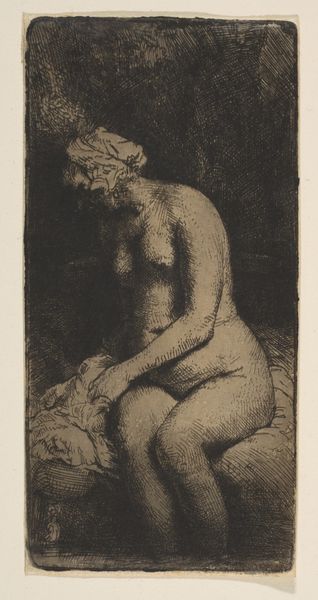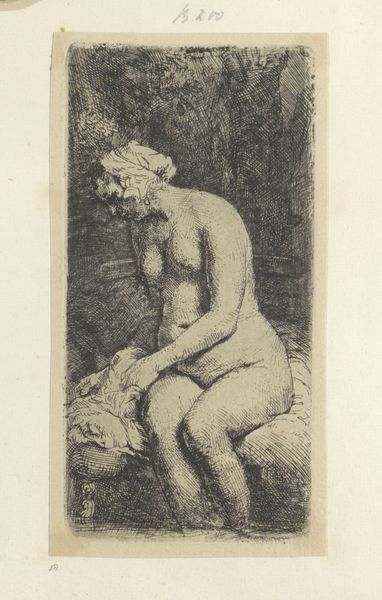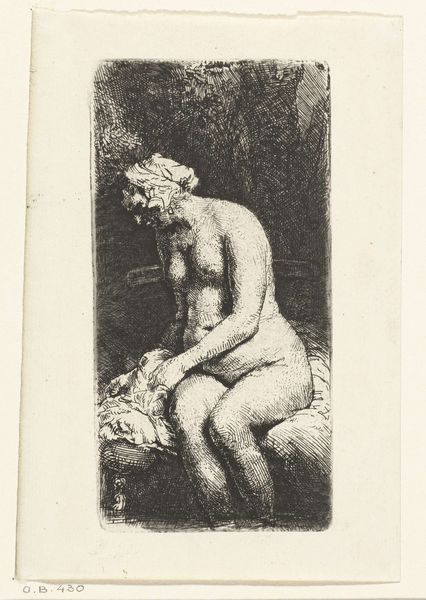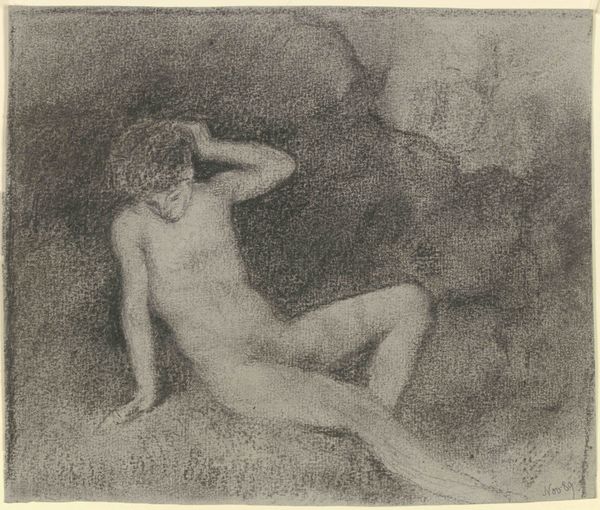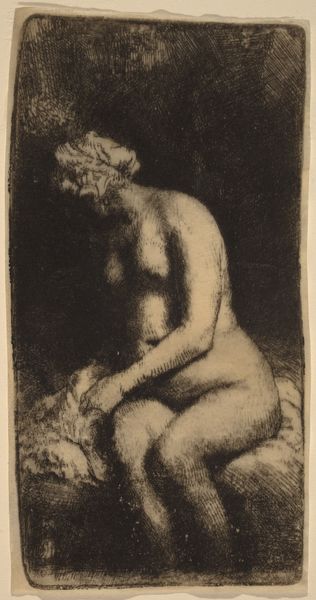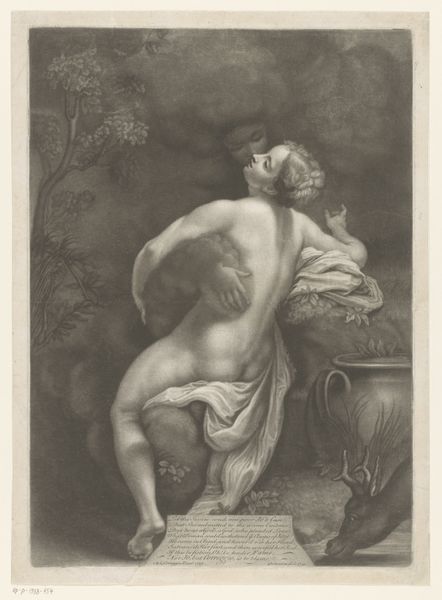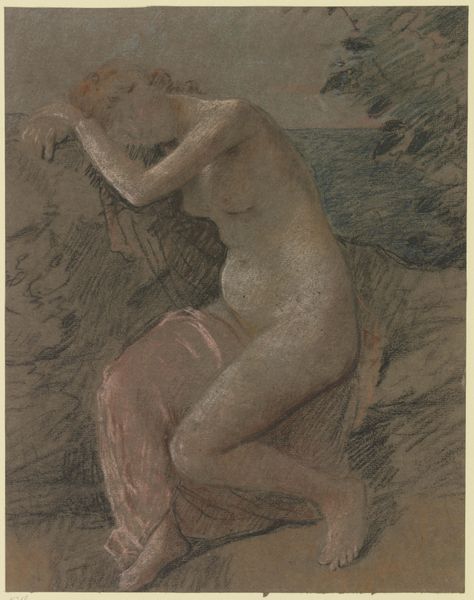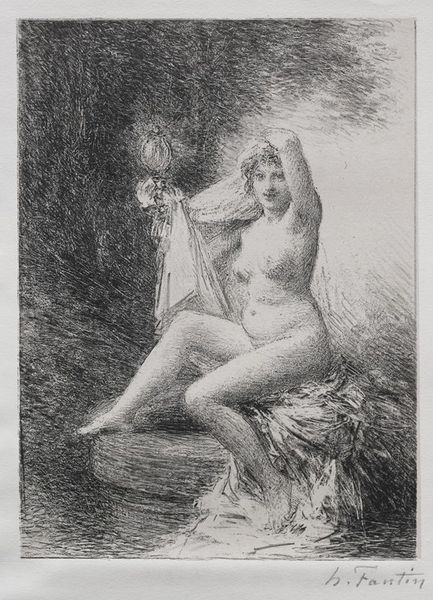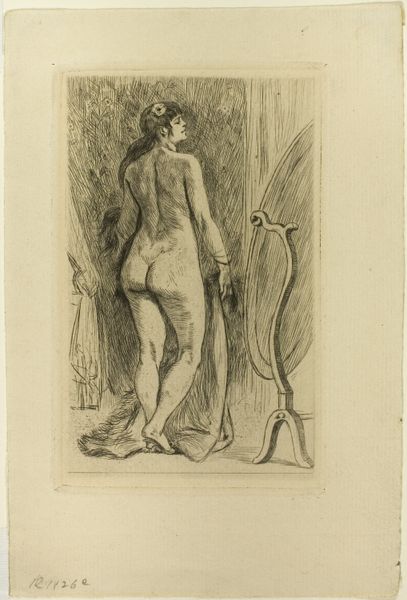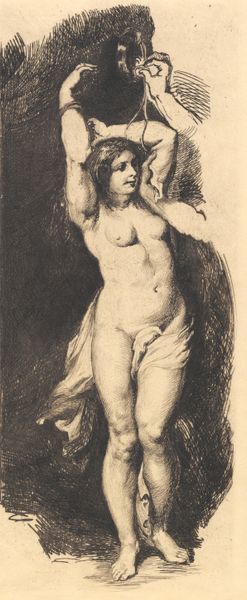
drawing, print, etching, intaglio, paper, ink
#
portrait
#
drawing
#
baroque
#
dutch-golden-age
# print
#
etching
#
intaglio
#
figuration
#
paper
#
portrait reference
#
ink
#
portrait drawing
#
nude
Dimensions: 205 × 124 mm (image/plate); 209 × 128 mm (sheet)
Copyright: Public Domain
Curator: My first thought: vulnerable, intimate, raw. Is that how you see it? Editor: Well, let’s place it within its time. This etching, titled "Woman with the Arrow," was created around 1661 by Rembrandt van Rijn, a master of the Dutch Golden Age. I'm curious, given its depiction of a female nude, what materials Rembrandt employed for this particular etching process? Curator: Focusing on the intaglio printing process gives insight into the creation. Here we see Rembrandt used etching and drypoint. These require different tools and create distinct marks. This results in an image constructed with a rich variation of line and tone on paper. The textures created through this process transform the subject and gives it emotional heft, I believe. Editor: I agree. But the depiction also reinforces certain societal norms around representation, right? These nudes were created and circulated within a specific context—who was the intended audience? Where would a work like this have been displayed? Curator: Good question. Printmaking made such images more accessible. How do these lower production costs change the distribution networks for art? Also, I can not help thinking about the actual labour and the workshops used in print production... Editor: Precisely! Considering this accessibility broadens the viewership considerably beyond aristocratic patrons and influences societal taste, including conceptions of beauty. It democratizes the image, yet it’s still filtered through the lens of wealth and power. It is a question about the tension between expanding access to visual culture and also maintaining social hierarchies. Curator: Absolutely. Studying the different states of this print—the artist makes changes. And if we examine those changes, what can this teach us about the maker's intentions regarding the finished object as commodity? Editor: A constant tension. Examining a piece like this reminds us how deeply enmeshed art is with its socio-economic and political environment, shaping what is seen and how it’s perceived. Curator: Exactly. When we study artmaking's nuts and bolts, we unlock more than just production know-how, also society's value judgements. Editor: And I think by understanding those societal frameworks, we begin to realize how they continuously reshape art and our perceptions of it.
Comments
No comments
Be the first to comment and join the conversation on the ultimate creative platform.

